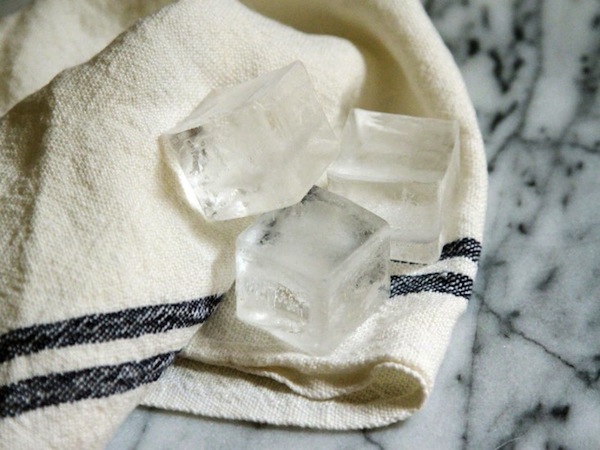8 Home Remedies To Dry Up Breast Milk Safely & Quickly
Breastfeeding also have many benefits for mothers. Breast feeding burns extra calories, so it can help you lose pregnancy weight faster. It releases the hormone oxytocin, which helps your uterus return to its pre-pregnancy size. Breastfeeding also lowers your risk of various diseases including breast and ovarian cancer.
However, when mothers breast feed their baby, after a certain time period (about 1-2 years), it becomes necessary for mothers to dry up breast milk supply, specially when baby start eating some solid foods. During weaning process baby's milk demand is decreased because he/she start to get essential nutrients from other food products.
When baby`s milk demand decrease, mother`s milk production automatically decrease but sometimes milk production don`t decrease and breast remain full all the time causing a lot of discomfort for mother. However you can reduce milk production and can dry up milk supply by following some home remedies which are given below:
8 Home Remedies to Dry Up Breast Milk Safely
1. Cabbage Leaves
Cabbage leaves are very effective in drying up breast milk. Place clean and chilled cabbage leaves in your bra, making sure the leaves are flat against the surface of the breast. When they begin to wilt, replace them with fresh leaves. The cold from the leaves acts as a cold compress on your breasts, helping to constrict blood vessels and stop milk production. The chill of the cabbage leaves also helps to relieve pain and swelling, while the enzymes in the cabbage leaves help to slow milk production.
Note: Don't use cabbage leaves if you are allergic to cabbage or sulfa because it can cause a rash.
2. Sage Tea
Sage Tea contains a natural form of estrogen and decrease your milk supply and help to dry up breast milk. Sage Tea is very bitter in taste so you can add some honey to improve taste. Drink a cup of sage tea three times a day for best results.
3. Parsley Herb
Parsley herb is considered very effective to reduce the production of breast milk. Parsley is used in preparation of various dishes. This is herb is more effective when added to a fresh salad.
4. Wear a Supportive Bra
Wearing a supportive bra can provide comfort, but don't bind your breasts. Binding can lead to problems like mastitis and plugged ducts. Use a good sports bra that will hold the breasts securely but not tightly because binding or tight fitting bras and clothing will only increase soreness and swelling and does not decrease milk supply.
5. Cold Compress
Use cold compresses directly on the affected breast to get some relief. If you are engorged or swollen use cold packs. Cold compresses may feel very comforting and reduce any swelling around the milk glands and ducts. For cold compress Ice packs can be wrapped in a towel and applied every two to three hours. This will help to reduce the pain.
6. Reduce the Number of Times You Breastfeed
The best way to dry up and to slow down milk production is to gradually reduce the number of times you breastfeed your baby. A slow wean is more comfortable for both you and your baby. The breasts make milk faster when they are empty and slower when they have milk stored in them. Therefore, gradually reduce the quantity of milk you feed your baby and don't let your breast completely empty.
7. Hand Expression
You can relieve your discomfort by expressing some milk by using your hand. Express just enough to soften your breasts, but not enough to empty them completely. Always go as long as you can before hand expression and take out as little milk as possible. If you have been expressing every 4 hours, start out by expressing every 5 hours, then every 6, then every 8 then every 12, and then 16 etc. If you gradually express less milk less and less often your milk supply will decrease without causing physical problems for you.
Note: While hand express, try not to stimulate nipple areas. Your body may mistake any type of touch for your baby’s feeding and may trigger your hormones to keep producing milk.
8. Change Feeding Positions
A breast-feeding baby will instinctively begin to find and look for the breast when you hold him/her in the nursing position and he/she smells your milk. Hold him/her in different positions for feeding when you switch to a milk bottle. Hold him/her in a more upright position or on your knees with his/her head facing you at first. Don't prop the bottle; your baby still needs the closeness that he/she got during breast-feeding. Try to give your baby more cuddle time during and after the feeding.
Some Other Tips to Remember
(i) Don't restrict water intake. Some mothers try to dry out milk by drinking less. Restricting your fluids will not reduce your engorgement and may lead to dehydration and breast infection.
(ii) Don't use a breast pump because If you use a breast pump you will still be telling your body it needs to produce milk. So avoid using a breast pump if you plan on drying up your milk supply.
(iii) Avoid touching your breasts. Any stimulation can cause a milk let-down, which signals your body to make even more milk.
(iv) Don't use a breast binder as these have been shown to increase pain and have no effect on the weaning process.
(v) Cut down on salt intake. Salt causes your body to retain fluids.
(vi) If you don't get the desired results after 2-3 weeks, consult your problem with a lactation consultant or a medical doctor.










